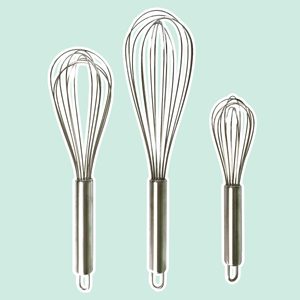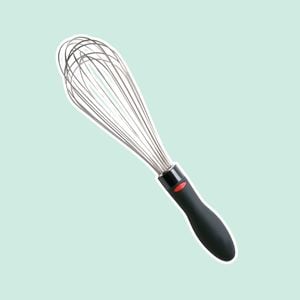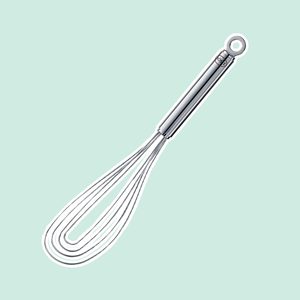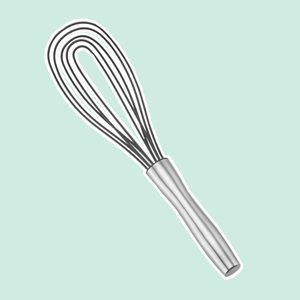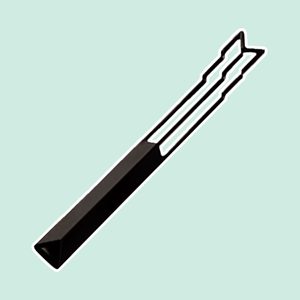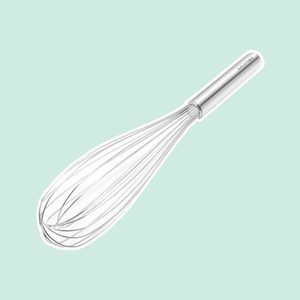Are You Using the Right Whisk for Your Recipe? A Guide to Whisk Types
Updated: Jan. 31, 2022
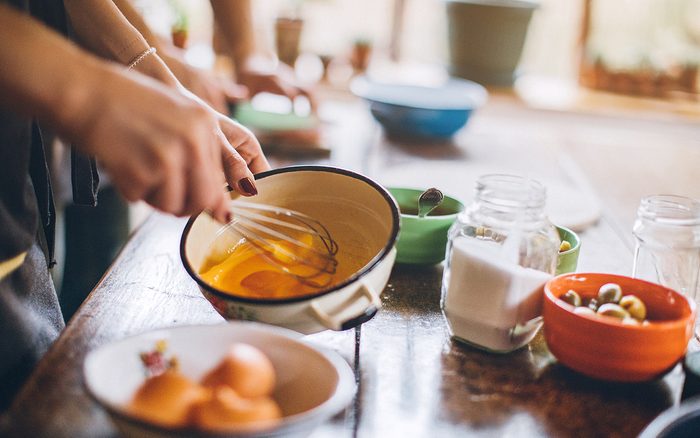
Whether you're scrambling eggs, making vinaigrette or whipping egg whites, there's a whisk for that! Here's a quick guide to whisk types.
Whisks are a favorite kitchen tool. What’s more satisfying than swiftly whisking a bowl of eggs for scrambling, beating mayonnaise until it emulsifies or whipping cream? But although whisks are all pretty similar—curved wires affixed to a handle—there are actually different types of whisks, each with its own specific design and uses.
Here’s a guide to common whisk types, and when to use each one.
Balloon Whisk
The balloon whisk is the quintessential whisk: the rounded wires expand into a generous, wide “balloon” shape.
Use a balloon whisk for: Whisking batters, even thick batters (the wide-spaced wires won’t clog). Mixing dry ingredients together (you can skip the sifter). Whisking custard and other sauces over heat. Whipping air into egg whites.
Not the right whisk for: This is an all-purpose whisk!
French Whisk
Another good everyday whisk, the French whisk has a more narrow shape and denser wires than the balloon whisk. The tapered shape makes it handy for working in smaller pots.
Use a French whisk for: Salad dressing and just about any sauce. The dense wires excel at whipping air into eggs, as in this pro technique for making fluffy omelets.
Not the right whisk for: Batters and doughs, which clog in the wires.
Flat Whisk
The flat whisk is like a two-dimensional version of a balloon whisk. The wires that loop from the handle are flat rather than curved. The shape is geared for maneuvering in sauce pans and pots.
Psst: Here’s why the flat whisk is a favorite in our Test Kitchen.
Use a flat whisk for: Whisking sauces, like roux or gravy. It’s also good for custards and dishes that require frequent stirring, like lemon curd.
Not the right whisk for: Aeration, mixing batters or dry ingredients.
Editor’s Tip: Consider looking for a silicone-coated whisk, which won’t scratch the surface of your cookware.
Coil or Spring Whisk
This cool little whisk looks something like a honey dipper. The wire twists into a tight coil shape, which allows the whisk to mix when you move the handle up and down, not just side-to-side. That makes the coil whisk ideal for mixing in tight quarters, like glasses and mugs.
Use a coil whisk for: Whisking cocoa mix into milk, whisking a cocktail in a glass or beating small amounts of ingredients (like one or two eggs).
Not the right whisk for: Dealing with thick batters or whipping air.
Ball Whisk
The ball whisk looks more like a back massager than a regular whisk. Its wires aren’t connected, but splay out from the handle, and each is tipped with a small round ball. The design makes the ball whisk a superstar when it comes to digging into corners of pots and spreading across flat surfaces, like frying pans. (Plus, the design is easier to clean than the “cage” of standard whisk wires.)
Use a ball whisk for: Whisking ingredients, dry or wet, especially in tight quarters, like measuring cups. Stirring scrambled eggs in the pan.
Not the right whisk for: Recipes that require precise stirring, like custards and sauces.
After whisking through our favorite types of whisks, you’ll see that most are multi-purpose. You certainly don’t need to own every kind of whisk (although that would make your utensil canister look super professional). Consider balloon and French whisks as the most all-purpose, and the others as fun, more specialized tools.
Our Test Kitchen’s Favorite Whisks
- Mark Neufang, our culinary assistant, uses this OXO Better Balloon Whisk. It’s light, flexible and perfect for whipping air into ingredients.
- Peggy Woodward, our senior food editor, recommends this Williams-Sonoma whisk. It’s silicone-coated and safe to use with nonstick cookware.
- Sarah Farmer, the executive director of our culinary team, loves the Z Whisk. “I really like the grip/control and overall ‘feel in-hand,'” she says. “The design allows you do some scraping (like with a flat whisk) which makes it perfect for making roux.”
See what other essential kitchen tools every home cook should have.






















